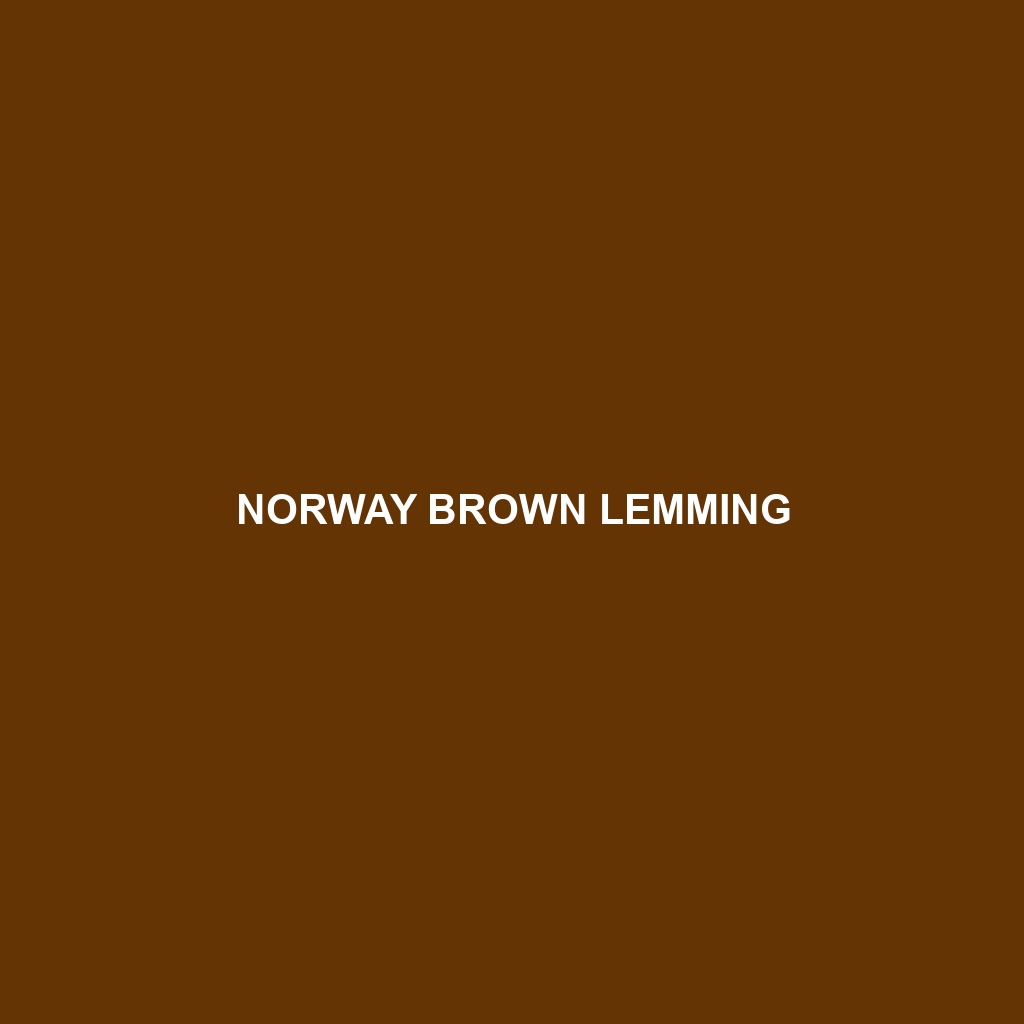Norway Brown Lemming
Common Name: Norway Brown Lemming
Scientific Name: Lemmus lemmus
Habitat
The Norway Brown Lemming is primarily found in the tundra regions of Scandinavia and parts of northern Russia. These habitats are characterized by cold climates, short growing seasons, and a variety of vegetation, including grasses, mosses, and lichens. The lemming thrives in moist, grassy areas and often inhabits bogs and wetlands, making it well-suited to survive in harsh, frigid environments.
Physical Characteristics
Norway Brown Lemmings are small rodents, typically measuring between 15 to 20 centimeters in length. They possess a stout body and a short tail, which is one of their distinctive features. Their fur is brownish-grey with lighter underparts, allowing them to blend seamlessly into their natural surroundings. The lemming’s rounded ears and small eyes further contribute to its unique appearance, making them a recognizable species in their habitat.
Behavior
Norway Brown Lemmings exhibit fascinating behaviors, particularly their migration patterns. In years of population booms, lemmings may migrate en masse in search of food, which often leads to dramatic population fluctuations. They are primarily diurnal, engaging in burrowing and foraging activities during daylight. Socially, they can be both solitary and communal, depending on food availability and environmental conditions.
Diet
The diet of Norway Brown Lemmings is herbivorous, consisting mainly of grasses, roots, and herbaceous plants. They are known for their ability to consume a variety of plants, which helps them adapt to the seasonal availability of food in their tundra habitats. Additionally, their feeding habits play a crucial role in shaping the vegetation structure of their ecosystem, making them an essential part of the food chain.
Reproduction
Norway Brown Lemmings typically breed during the summer months, with a gestation period of about 3 weeks. Females can produce multiple litters per breeding season, with each litter containing 5 to 10 young. Parental care is vital in the early stages of the offspring’s life, as the mother feeds and protects her young until they are ready to fend for themselves.
Conservation Status
Currently, the Norway Brown Lemming is classified as a species of “Least Concern” according to the International Union for Conservation of Nature (IUCN). However, environmental changes and habitat loss may pose future threats, making ongoing monitoring crucial to ensure the survival of this species.
Interesting Facts
One of the most commonly held myths about lemmings is that they periodically engage in mass suicide. In reality, their migrations can lead to dangerous situations, but this is strictly part of their natural life cycle. Additionally, these lemmings are excellent swimmers, capable of crossing rivers in search of new habitats.
Role in Ecosystem
The Norway Brown Lemming plays a pivotal role in the Arctic ecosystem. As a primary herbivore, they help maintain the balance of plant communities. Furthermore, their population dynamics significantly impact predator species, such as arctic foxes and snowy owls, which rely on them as a food source. Thus, they act as a crucial link in the food web of their arctic environment.
